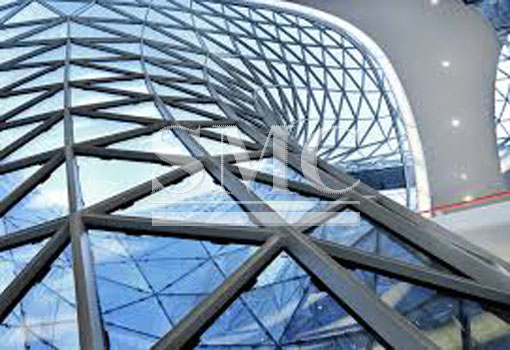Steel, one of the worlds widest used metal alloy is known for its strength, anti-corrosive properties, and and ductility. Used to create things such as buildings structures, roads, and vehicles it is important that steel maintains its strength and durability for years without failure. Metal fatigue can lead to catastrophic failures in parts that often undergo loading and stress. Recently, researchers from around the globe have come together to develop a laminated nano-structure that greatly reduce the effects of fatigue on steel.

Researchers at the Massachusetts Institute of Technology (MIT), the Max Planck Institute in Germany, and Kyushu in Japan developed this laminated nano-structure that gives steel a bone-like structure and allows it to deform without promoting the spread of micro-cracks that can lead to fatigue failure. Cem Tasan, a professor of metallurgy at MIT describes the groups finding in a paper published in Science.
Tasan says they were inspired by nature and how bones are lightweight but very resistant to crack propagation. A key component in bone fractures resistance is its hierarchical mechanical structure, so the team tried to copy this structure in metal alloys. The team designed and created a form of steel with three key characteristics that are used in unison to reduce the spread of any cracks that do form due to fatigue. The first characteristic is the layered structure that prevents cracks from spreading beyond where the cracks originated. The second important feature in the teams design is the use of micro structural phases with different degrees of hardness. These layers compliment each other to also reduce the cracks from spreading to the next layer. The last key component is the metastable composition; tiny areas within the structure that are poised between different stable states with varying flexibilities to help absorb the energy of spreading cracks. The metastable composition even has the potential to close existing cracks back up.
In order to better understand the three key characteristics, the researchers tested steels only containing two of the three characteristics, and they did not perform as well as those alloys with all three. Tasan explains how difficult it is to test such materials under real world conditions, “the extreme sensitivity of these materials to surface defects. If you scratch it, it’s going to fail much faster. So meticulous preparation and inspection of test samples is essential.“

The benefits of applications of this stronger steel can be used in an abundance of industries. Tasan says, “This is an alloy that would be more expensive than a basic low-carbon steel, but the property benefits have been shown to be quite exceptional, and it’s with much lower amounts of alloying metals (and hence, costs) than other proposed materials.” The automotive and aerospace industries are just two large examples of industries with potential to benefit from this stronger and more reliable steel alloy.
Shanghai Metal Corporation is a trusted aluminum alloy, aluminum foil price, stainless steel price and stainless steel manufacturer, kinds of stainless steel in china.
Guest contributors are welcome at the Alloy Wiki.It is a weekly wiki and guide on alloy information and processing technology, while also about the vast array of opportunities that are present in manufacturing. Our team of writers consists of a Machining Material Supplier / Machinist / Tool and Die Maker, a Biomedical Engineer / Product Development Engineer, a Job Development Coordinator / Adjunct Professor, and a President and CEO of a manufacturing facility.
Link to this article:Stronger Steel Increasing Safety
Reprint Statement: If there are no special instructions, all articles on this site are original. Please indicate the source for reprinting:Alloy Wiki,thanks!^^


